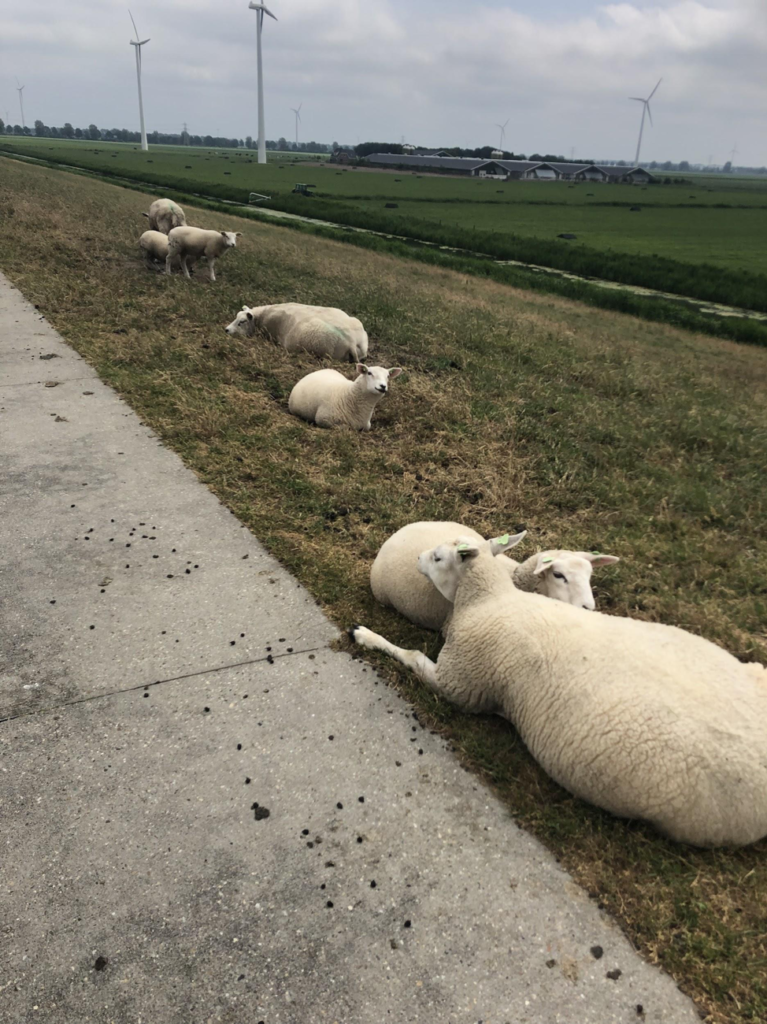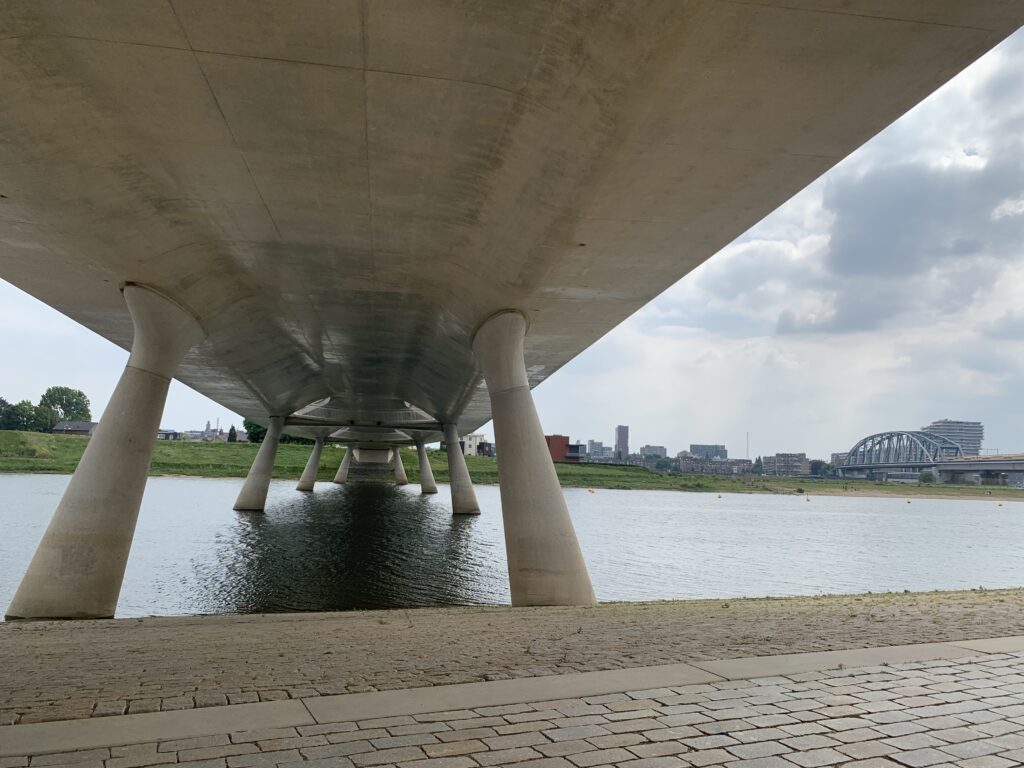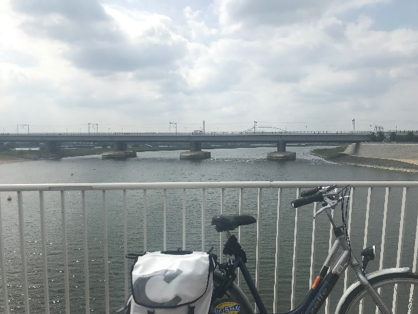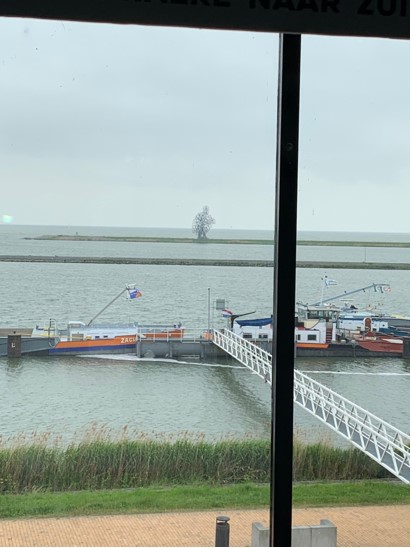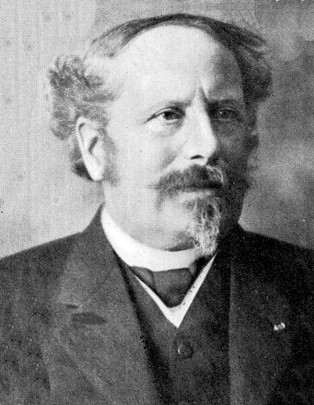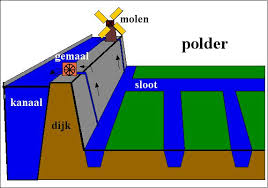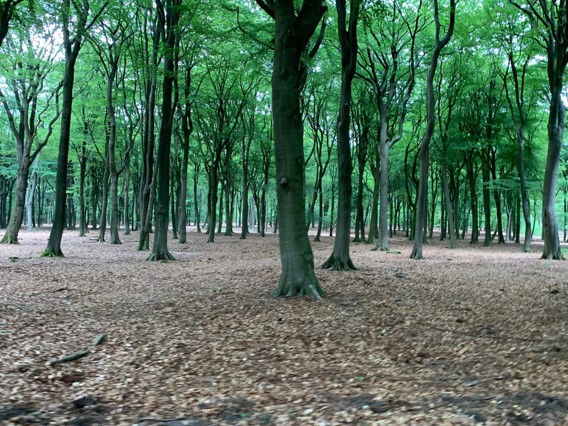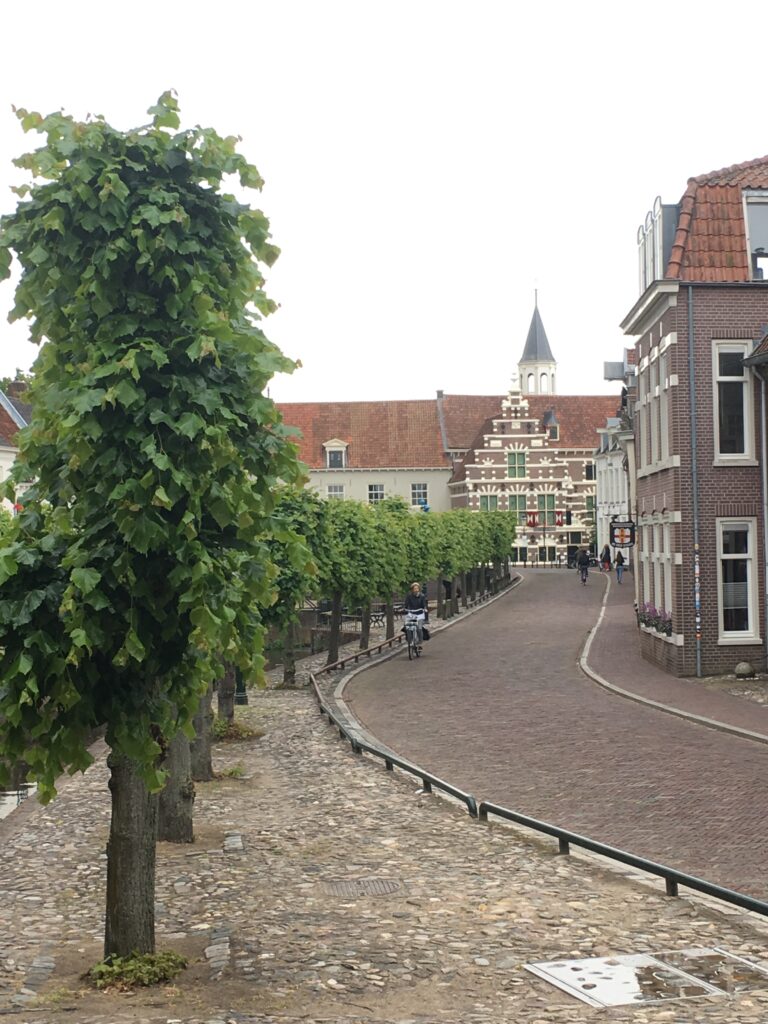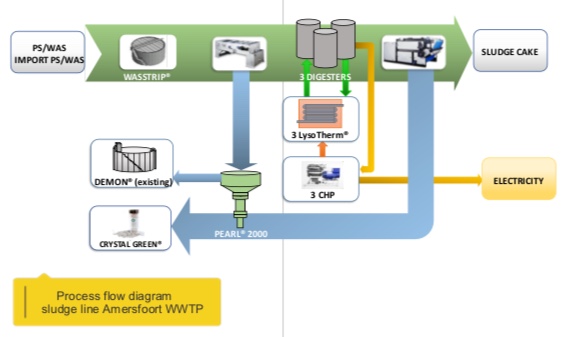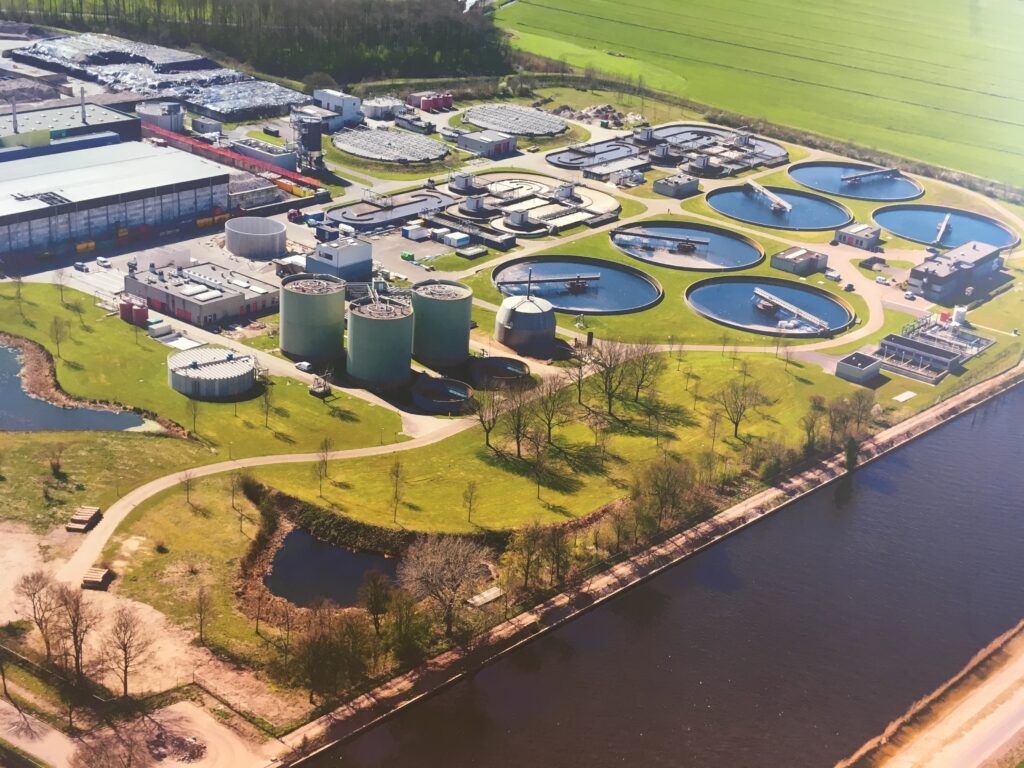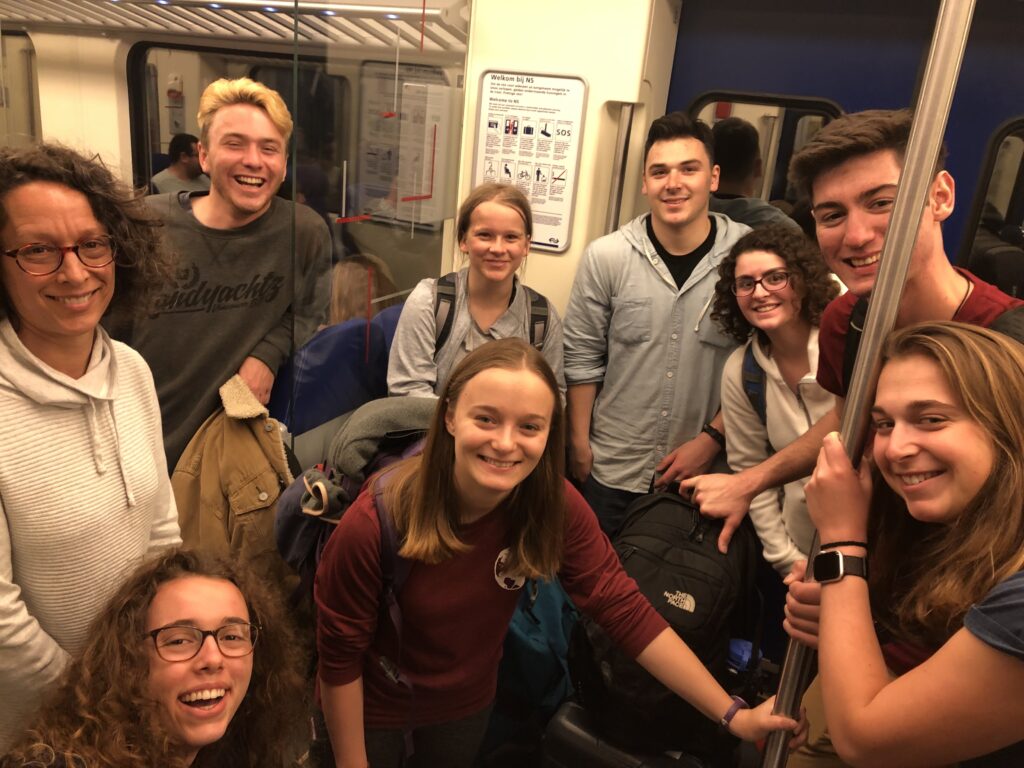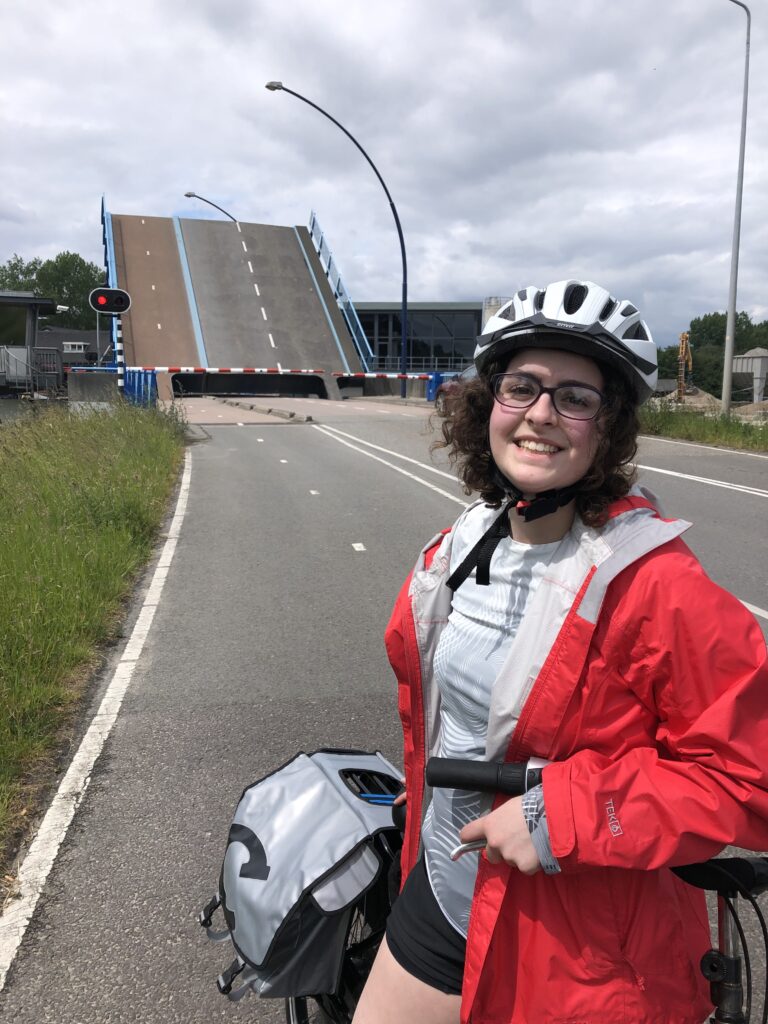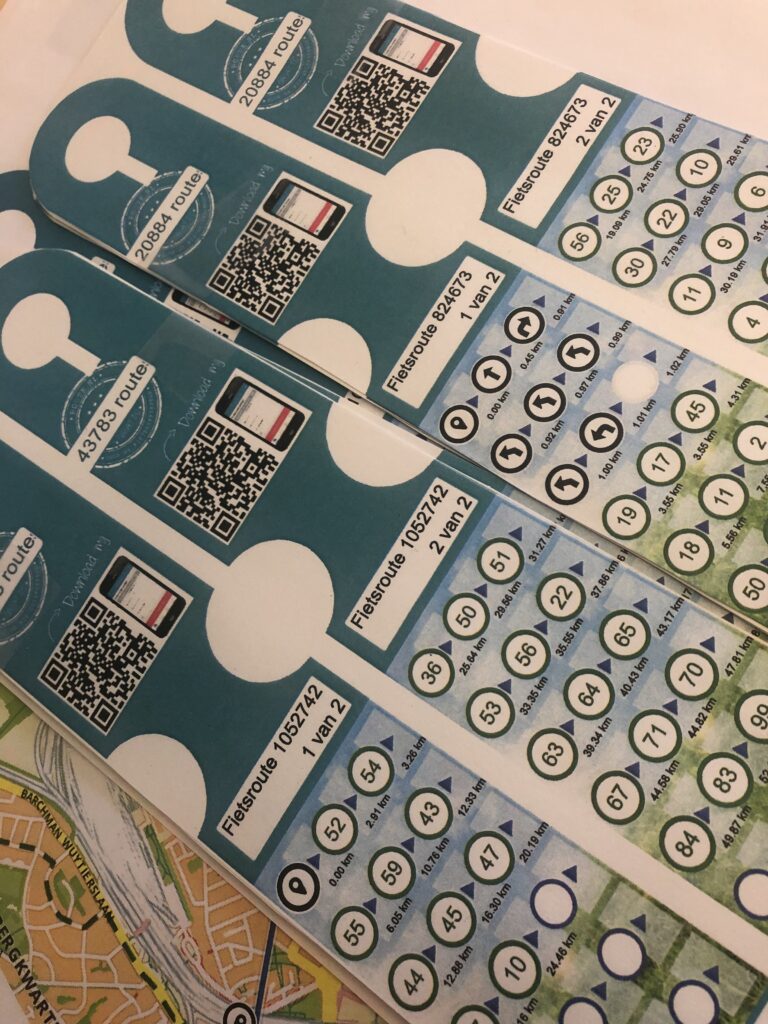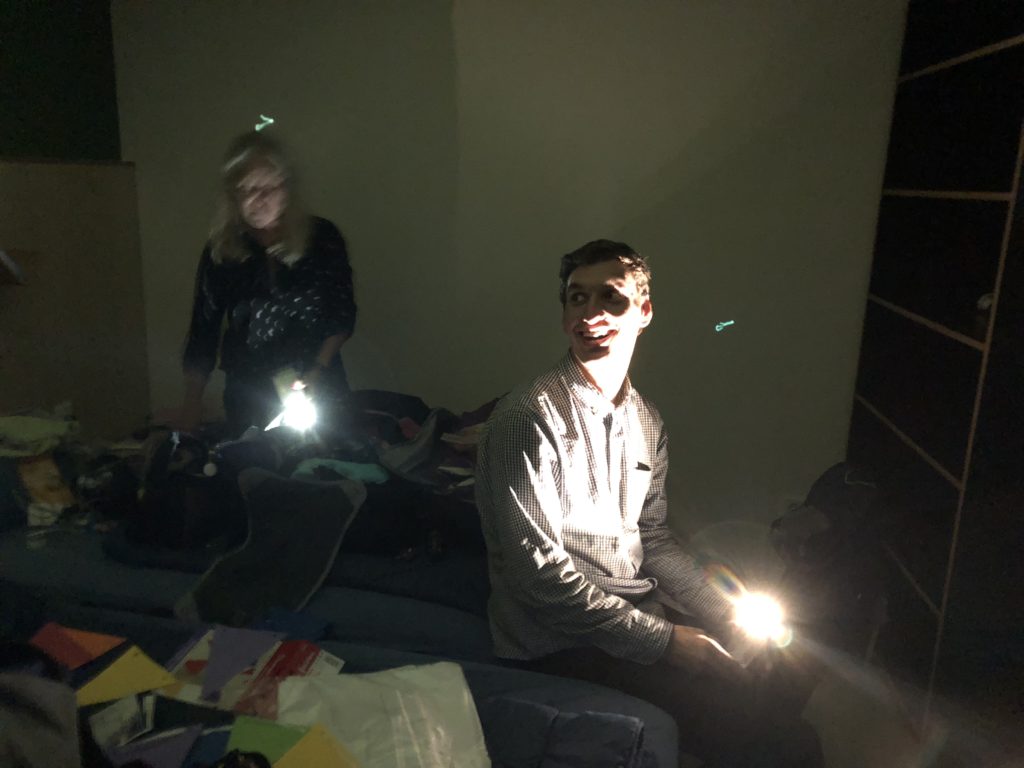By Alison, Wildlife and Fisheries Biology; Sophomore
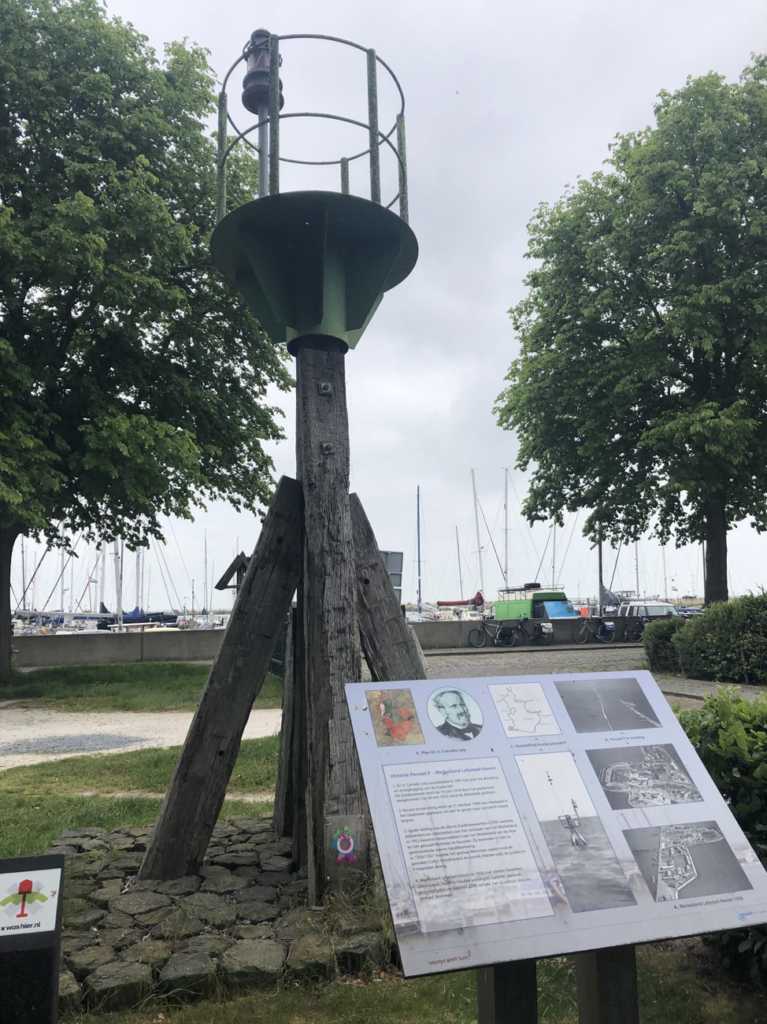
This post relates to our adventures on 30 May:
For today’s new adventure in the Netherlands, the group traveled from Lelystad to Apeldoorn. From the Apollo hotel we stopped at Museum Nieuwland also known as Batavia Land and Maarten taught us about the rising sea levels in the Flevoland province. Areas were flooded and people were looking for a dry and safe place to live. A solution to this was the Plan Lely: Zuiderzee Project where people wanted better safety, water management, connections soils for agriculture, space for cities and nature. The goals of this plan were flood protection for people around the Zuiderzee, land reclamation for production of food for the increasing population in the Netherlands, improving water management, and to have a low maintenance costs for the dykes. In order to create a polder there has to be construction of a ring dyke and pumping stations, pumping out the water, dredge canals and ditches and maturation of soil. Once the polder was constructed there were problems like having too much water and not enough air in the soil. A solution was to let the water out and the air in to make the soil better for the farmers whose crops were failing. Not everyone was in favor of this new plan like people’s homes who were right on the water and many people near the water as well. It was interesting to find out that the polder created happen to be on the very grounds we were standing on and the area had once been completely underwater. Maarten had presented this on a PowerPoint presentation and showed us a film right after about it. We were also able to see a large boat which was one of many that have been found in old shipwrecks in Flevoland.
There was also a part in the museum where 14 women had sown lots of different events in the area over time. After learning lots about this, Maarten went out of his way to show the group a pumping station near the museum and then we proceeded to the Stayokay hostel in Apeldoorn. Along the way we were biking near some sheep as well as some beautiful trees in the forest and the hostel ended up being in the forest too.

